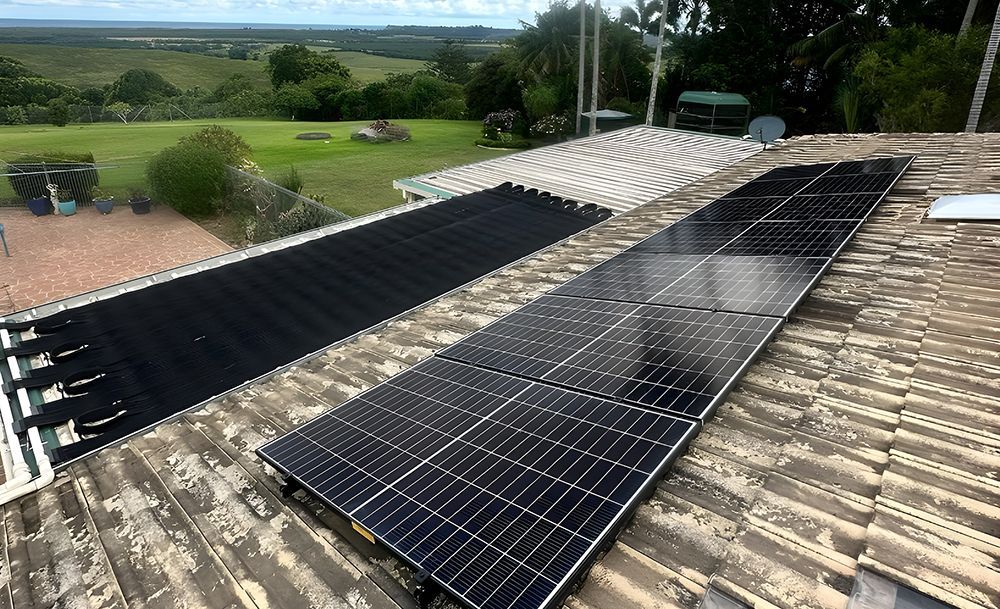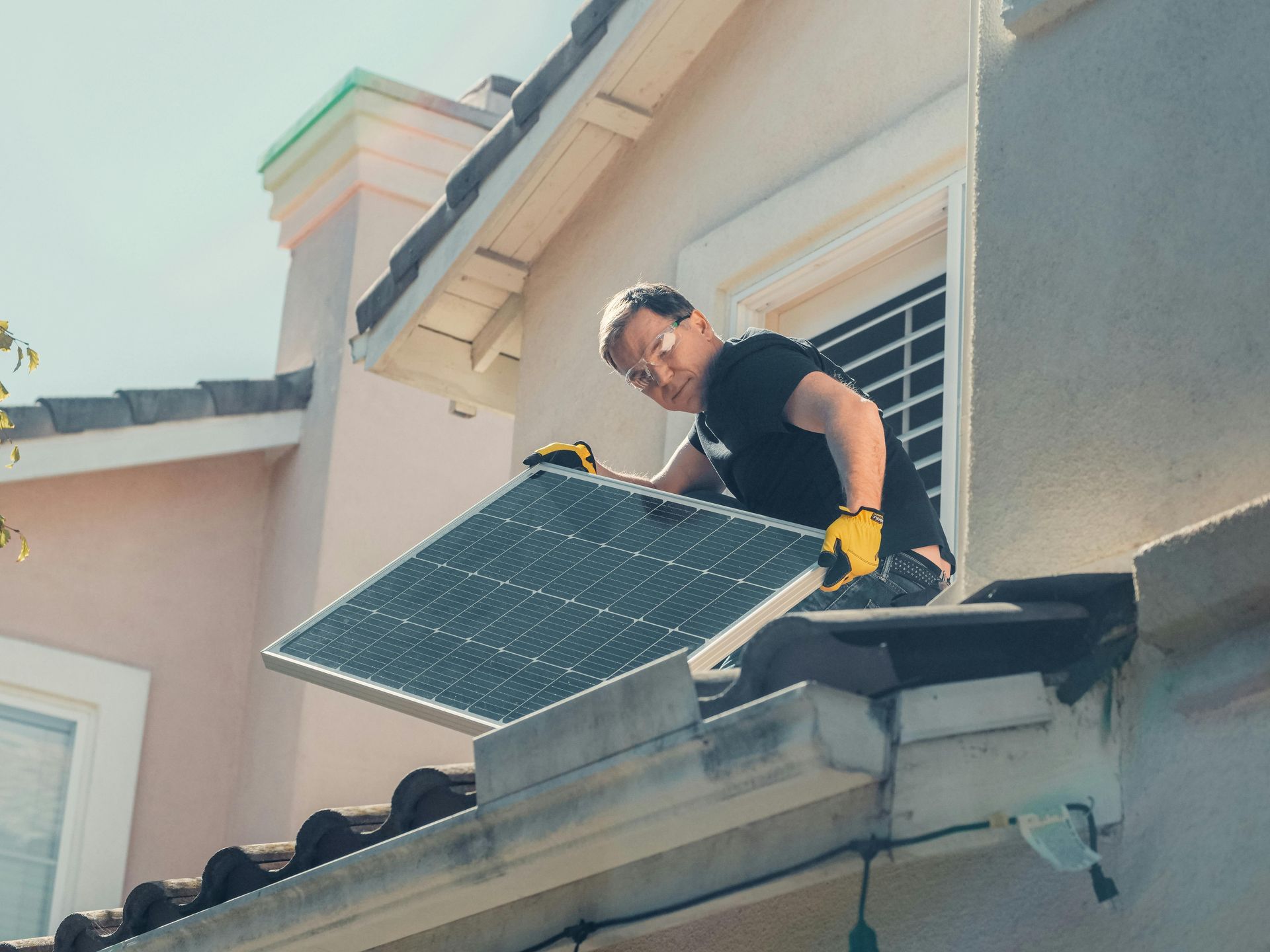How to Choose the Right Solar System Size for Your Home
Investing in solar is a smart move for homeowners who want to reduce electricity bills, future-proof their properties, and support sustainability. But choosing the right solar system size isn’t just about picking the biggest option you can afford.
It’s about understanding your energy consumption, roof potential, system design, and long-term needs. If you’re based in areas like Lismore or Ballina, you also need to consider local grid limits and installation standards that can affect your options. This guide covers the key factors that will help you determine the ideal solar setup for your home—so you can make the most of your investment, both now and in the future.

Understand Your Household’s Energy Usage Patterns
The foundation of good solar system sizing is understanding how much electricity your household actually uses. Start by looking at your electricity bills across a full year to get a reliable picture of your average daily and seasonal usage.
- Review your last 12 months of electricity bills to identify average daily usage in kilowatt-hours (kWh).
- Take note of seasonal fluctuations—many homes use more energy in summer for cooling or winter for heating.
- Highlight energy-intensive appliances like air conditioning, pool pumps, or electric ovens that affect usage patterns.
- Identify daytime usage patterns—solar power is most effective when it offsets energy consumed while the sun is out.
This will help you choose a system size that matches your real-world energy habits, avoiding the cost of under- or over-investment.
Factor in Roof Space & Solar Panel Orientation
Your roof is the platform for your solar panels, so its size, slope, and exposure to sunlight directly affect how large your system can be. Even if you have high electricity usage, you may be limited by roof constraints.
- Measure the usable roof area free of shade from trees, chimneys, or nearby buildings.
- Panels facing north provide optimal generation, but east-west arrangements can be used if north-facing space is limited.
- Consider the tilt and angle of your roof, which affects how much sunlight your panels receive throughout the day.
- Shade patterns change during different times of the year, so it’s worth factoring in long-term impacts.
Solar professionals can help assess the best configuration to maximise output from your available roof space.
Consider Future Lifestyle Changes & Energy Additions
Your solar system needs to serve not just your current lifestyle but also the demands you expect to have in the future. Sizing up slightly today can save you the hassle of expanding or upgrading later.
- Planning to buy an electric vehicle? Charging at home can double or triple your energy needs.
- Adding a pool, spa, or a second air conditioning system? These increase daytime consumption significantly.
- Working from home more often? You’ll use more electricity throughout the day, exactly when solar is generating.
- Expecting a growing family or home extension? More people typically means more appliances, lights, and energy.
Anticipating these changes helps ensure your solar system continues to deliver value as your household evolves.
Weigh Up Budget Versus Long-Term Savings
The temptation to go for the biggest solar system your roof can hold is real, but cost matters. It’s important to balance your upfront budget with the long-term return on your investment.
- Smaller systems (e.g., 3–4 kW) are cheaper upfront but may not meet all your household needs.
- Mid-size systems (5–7 kW) suit average family homes and offer good return on investment.
- Larger systems (8–10+ kW) can support bigger homes or prepare for battery use but cost more to install.
- Solar rebates and incentives can reduce upfront costs, making higher-capacity systems more accessible.
Rather than choosing purely on price, focus on value: the system that delivers the best return over 10–15 years.
Match Your System to Feed-In Tariffs & Grid Connection Limits
Exporting excess energy to the grid is a key part of solar ROI, but it depends on local feed-in tariffs and grid rules. These can affect the maximum system size allowed or how much energy you’re permitted to export.
- Feed-in tariffs in many areas are lower than they once were, so self-consumption is often more valuable.
- Some electricity networks cap the amount of solar that can be exported from residential properties.
- Larger systems may need export limiting or special approval from your energy distributor.
- Your installer will check your site against local regulations and help you choose a compliant, profitable system.
Understanding these limits early avoids costly reworks or underperforming systems after installation.
Ensure Compatibility with Your Switchboard & Inverter
Your home’s existing electrical infrastructure must be ready to handle your new solar system. This includes the switchboard, meter, and inverter, which need to work together to distribute and manage solar power safely.
- Older switchboards may need upgrades to meet safety standards or support larger systems.
- Your inverter size determines the maximum generation capacity of your system.
- Some homes may need additional wiring or safety devices to integrate solar and prevent overloads.
- Solar inverters should match your expected solar output and allow for future expansion, if planned.
Checking these elements in advance ensures a smooth and safe installation with no last-minute surprises.
Plan for Solar Battery Integration
Even if you’re not installing a battery right away, it’s wise to consider one in your system design. A slightly larger solar system today can pave the way for energy storage tomorrow.
- Installing a solar system that generates surplus power during the day supports future battery charging needs.
- Your inverter should be either hybrid-ready or easily replaceable with a battery-compatible model.
- Batteries let you store excess energy for use at night or during outages, increasing energy independence.
- Planning ahead avoids redoing electrical work later when you decide to add storage.
A future-proof design gives you flexibility to adopt storage solutions as they become more affordable.
Consult a Local Solar Specialist for an Accurate Assessment
While online calculators and energy guides are helpful, there’s no substitute for a professional site inspection and solar design by a local expert.
- Local installers understand regional weather patterns and how they affect solar production.
- They’re familiar with council and distributor regulations for areas like Lismore and Ballina.
- A good installer will inspect your switchboard, roof, shading, and consumption before making recommendations.
- Custom system design ensures you get the best balance of size, cost, and performance.
Choosing a trusted professional helps you avoid mismatched systems, performance issues, or compliance delays.
Let Us Help You Size Your Solar System the Smart Way
At Grand Casa Electrical & Solar, we help homeowners choose tailored, scalable, and efficient solar systems. Whether you're in Lismore, Ballina, or surrounding areas, our team will guide you through every stage—from site inspection and usage analysis to system installation and ongoing support. We take the guesswork out of solar sizing so you can power your home with confidence.
Give us a call to book a solar assessment or get in touch via our contact page to start your journey toward cleaner, more affordable energy.






